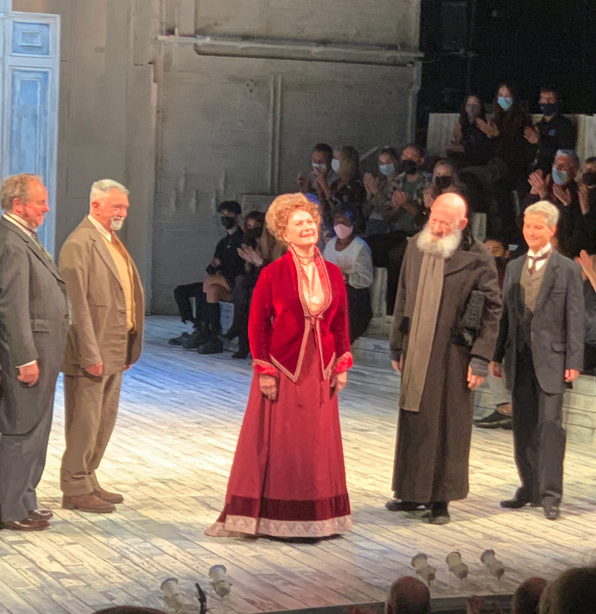Theatre Royal, Windsor is one of those lovely intimate local theatres, up and down the land, that used to serve their local communities with a diet of reliable staples like Agatha Christie, Alan Ayckbourn, Ray Cooney and the occasional classic, mostly served by touring producers and local amdram groups. (Prior to this year, the only previous occasion I visited this theatre in the early 1980s was for a production of Christie’s A Murder is Announced).
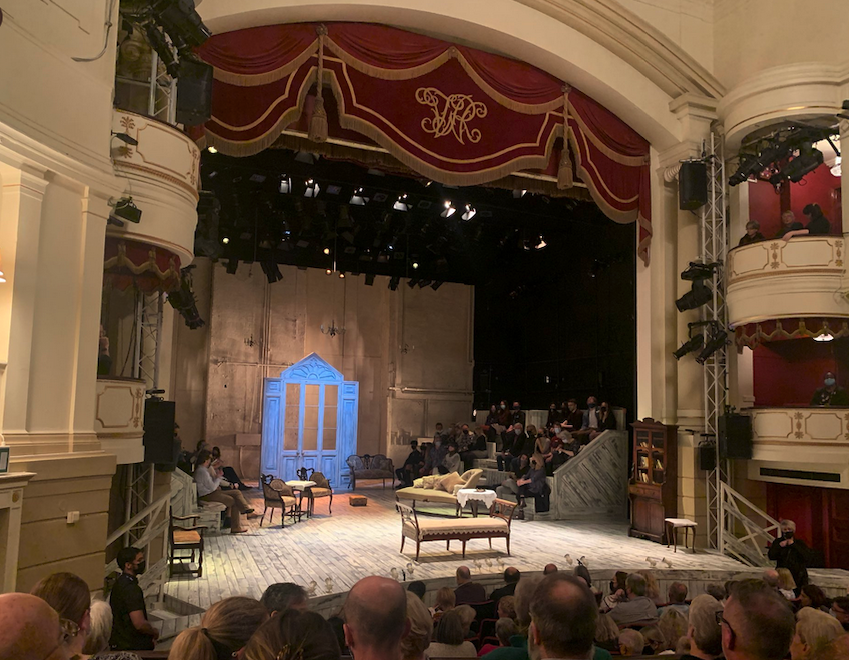
This theatre, on the Queen’s doorstep in the shadow of Windsor Castle, is a true gem. An intimate playhouse on two levels, its stalls are divided into two with separate entrances for each part, front stalls and royal stalls. Now, after years of a fairly anonymous existence, it has been finally caught national attention thanks to producer Bill Kenwright appointing director Sean Mathias as artistic director and, with Ian McKellen as star, leading the only current classical company operating in the UK in a cross-cast season of Hamlet and The Cherry Orchard.
That first production of Hamlet back in the summer was full of serial novelties, not least Sir Ian returning to the title role that he first played fifty years ago, and now took again at the tender age of 82. It was a production not only age-blind, but also gender-blind, with Frances Barber playing Polonius.
I reviewed it here at the time, and if this Cherry Orchard is a more traditional take on a great classic, there’s still room for radical reinvention here, too, with Jenny Seagrove playing her first-ever male role, Gaev (complete with a dinky little Movember moustache). Mathias’s production also replays multiple historical associations, including reuniting McKellen and Francesca Annis, who played Romeo and Juliet for the RSC together 45 years ago, and now play Ranyevskaya, the long-bereaved landowner who returns to her country property where her young son drowned, opposite McKellen as Firs, her old retainer who manages the house, or at least dithers around it.
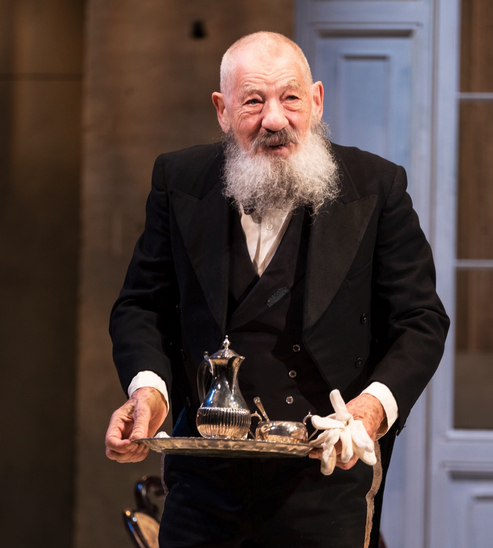
He is utterly hilarious. As Nick Curtis noted in his review for the Evening Standard, he is
“not only our finest living classical actor but a great, low-key physical comedian. Having played down his age in Hamlet, he plays it up here. His Firs is a muttering, shuffling, nagging, digressive scene-stealer, with a shaved head and a bushy rectangle of grizzled beard. Told he’s grown very old he ripostes: “That’s because I’ve lived a long time”. McKellen uses his native Burnley accent. He plays the final scene for all that it – and he – is worth.”
They are joined by a company that includes Martin Shaw (Seagrove’s TV co-star on Judge John Deed, and a long-time member of Kenwright’s extended acting family, whose theatrical career has blossomed under him since starring in Alan Bleasdale’s Are You Lonesome Tonight? in 1985) as Lopakhin, and the wonderful Robert Daws as the desperate Pishchik.
These stunning actors remain at the top of their game, and are surrounded by an ace company. This tender play of letting go of the past provides a valedictory way for McKellen to blaze new trails, proving yet again there are no small parts, only small actors. He’s a giant — and even as Firs is passing, forgotten, gently into the night, he is of course unforgettable.
At a time when the National and the RSC have currently abandoned company shows, this venture is a true outlier, offering the only classical company in the land.
A week ago I interviewed the principals for video release on the stage of the Theatre Royal; the first two clips can be viewed here:
and here:
ENO is back in business….
Last night saw the ENO — one of my favourite companies in the country — back in business, after more than 18 months out of residence at the London Coliseum (though the company was hardly dormant — unlike, say, the Young Vic), both behind-the-scenes (its costume department made scrubs for the NHS), and staging opera in a drive-in setting in Alexandra Palace.
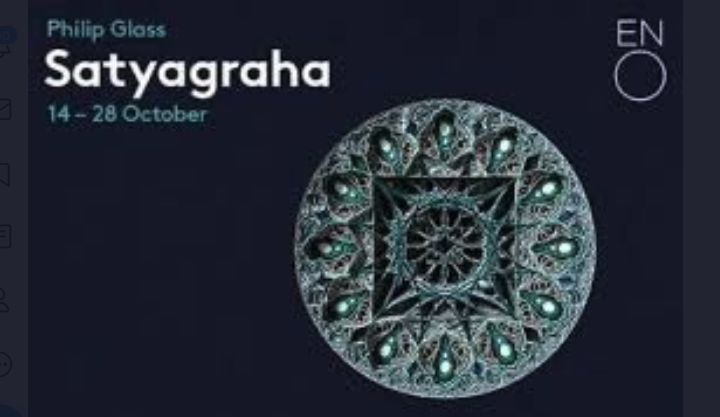
It returned with one of its greatest-ever productions, Phelim McDermott’s startlingly beautiful expressionist take on Philip Glass’s haunting, meditative opera Satyagraha on chapters in the life of Gandhi, originally premiered at the Coliseum in 2007 in a co-production with New York’s Metropolitan Opera House.
Before the curtain was raised, CEO Stuart Murphy was joined onstage by the company’s artistic director, music director and chair of the board, all of whom gave pre-show speeches. Given that the opera already runs some 3 hours 15 minutes, this late start meant that I would miss my last train, so I had to leave at the second interval. Though its understandable to want to celebrate their return to their home theatre in this way, this lack of keeping to schedule has real-life consequences for (some of) the audience. But once I was on my train, I immediately booked a return visit for the last night on October 28, when I’ll make plans to stay over in London, so I don’t find myself under the same pressure!
Playing catch-up…..
Even when I lived in London, I’d regularly have to play catch-up on shows I’d missed: last night, for example, the opening of Satyagraha clashed with Macbeth at the Almeida, so I’ll be returning to London tomorrow afternoon to see that!
But in the last couple of days, I also played catch-up on two new productions of modern classics — Ayub Khan Din’s 1997 play East is East, deservedly finding a home at the National, even if the production looks a bit marooned on the large Lyttelton stage, and the actors sometimes struggle to be heard (even from my position in the fourth row of the stalls).
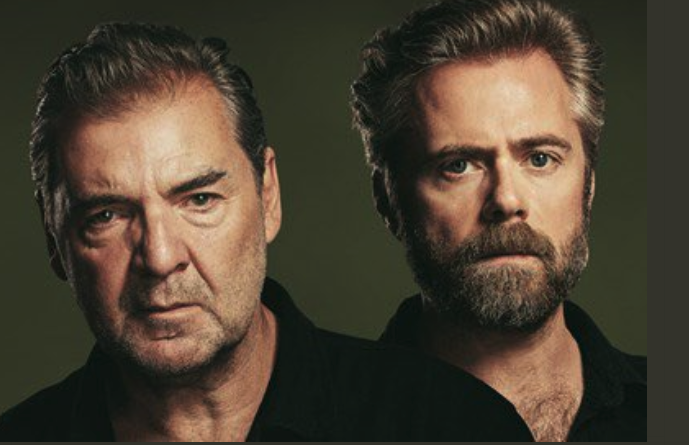
And yesterday afternoon I also saw the quietly stunning revival of Conor McPherson’s 2004 play Shining City at Stratford East, recently dubbed by The Times as “the coolest theatre in town.” This extraordinary production confirms it. Rory Keenan and Brendan Coyle (above, respectively right and left) play a therapist and his client in this haunting portrait of love and loss, guilt and shame; and we also observe the therapist’s interactions with his female partner he is splitting up from and a male sex worker he hires. The entire play is charged with suppressed emotions (and desires) struggling to break out, and it feels emotionally thrilling.

